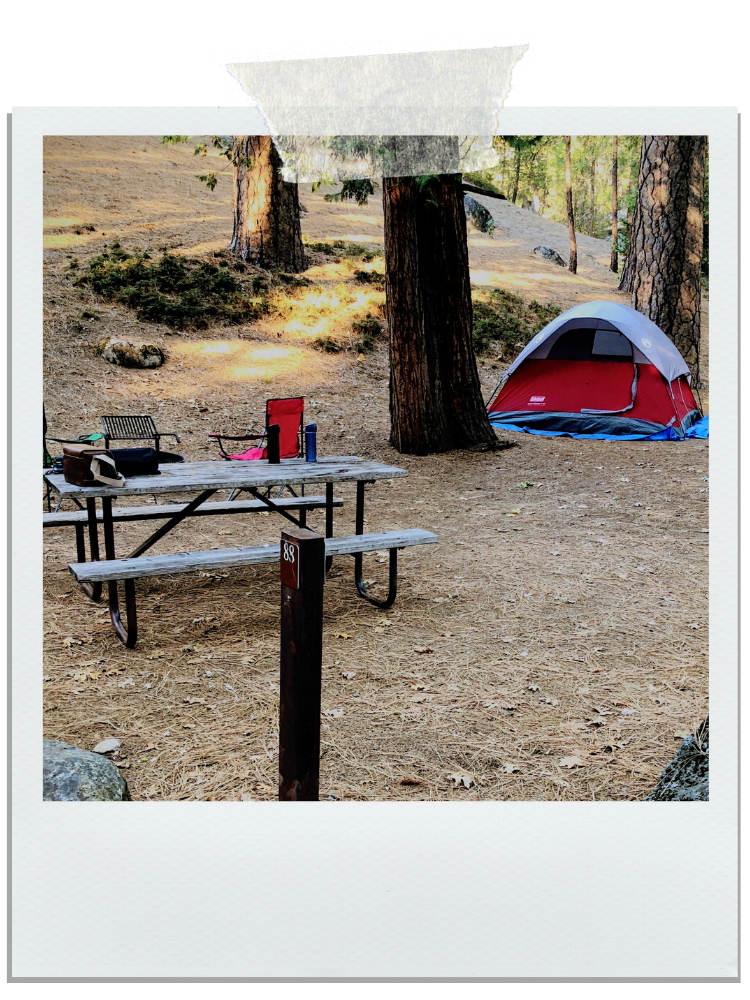Car Camping 101: A Beginner's Guide To Planning Your Outdoor Adventure
Some of the links in this post may be affiliate links. This means that if you click on the link and make a purchase, I will receive an affiliate commission at no extra cost to you. All opinions remain my own, and I will never link to something I don’t truly use and trust myself.
I absolutely love camping, it is one of my favorite outdoor activities. It can also be one of the easiest and most inexpensive types of travel, depending on how you go about it.
Let’s start off by defining car camping. There are different types of camping: RV, backcountry, glamping, and car camping to name a few. Car camping essentially means that you pack up all of your camping gear into your car, drive to your campsite, and set up your site usually within eyesight of your car. It does not mean that you sleep in your car, though you certainly could if you wanted to, and the campground rules allow it.
Car camping is great for the novice camper who maybe wants to get their toes wet before diving into a more strenuous backcountry adventure. It is also good when you’re short on time, maybe you only have a weekend free. Car camping is most popular with families with children, as it is a relatively low impact way for you to check out from the hustle and bustle of life without too much stress.
So How Do You Plan Your Car Camping Trip?
One of the first things you need to decide is how long you want to go camping for. I recommend only two to three nights if you are new to this. Many campgrounds have a minimum two night reservation policy during the busier seasons - late spring to early fall.
Depending on where you want to camp, you may need to reserve a campground months in advance (national parks like Yosemite) or you may be able to just show up on a first come first serve basis (smaller parks and campgrounds in remote locations). There are many types of campgrounds including those in state parks, national parks, and privately owned. There are several great resources to help you find the perfect campground for you. These ones are for campgrounds in the U.S.
Reserve America: This is a big one. You can search both state and federal campgrounds, as well as privately owned ones through this portal.
Your State Parks Website: For example, I can reserve campsites in California through Reserve California. Search for the state park site where you live and they most likely will have a section with information on camping.
KOA (Kampgrounds of America): KOA is a network of privately owned campgrounds around the country.
It’s important to think about the time of year when planning your camping trip. You will be sleeping outside (or in a tent), so take comfort into consideration. I’ve camped in below freezing temperatures before, and it is doable if you have the right gear, but it can be uncomfortable if you aren’t prepared.
Packing
That brings me to my next point: Packing. You have a bit more flexibility when car camping since you don’t have to carry all your gear on your back to your campsite. You can check out my complete car camping packing list here to use as a guide when preparing for your trip. Luckily, with car camping, if you forget something or need to get something extra, you have easy access to your car and can usually find what you need close by. Some campgrounds even have general stores with basics like firewood, ice, and food.
Food Prep & Safety
Many campgrounds offer bear boxes at their campsites if there is a risk of bears entering the campground. Bear boxes are essentially a big metal food locker that the animals are unable to open. Your car won’t be sufficient, because bears have figured out how to break into them in some areas. Even if you are camping where bears aren’t a possibility, you still need to be cautious with your food. Raccoons love raiding campgrounds in the middle of the night. I would suggest keeping the food in your car in these instances. They’ve figured out the trick of sliding your cooler under the picnic table bench.
You should also check if your campsite has a grill or fire pit. If not, you will need to bring your own. My husband and I usually bring our little Weber grill for car camping trips. That way, we have some way to cook, even if fire restrictions are in place. This, of course, would be too big for a backcountry campout.
Camping can be such a fun activity for the whole family. I hope you end up loving it as much as I do, and make it a tradition. We usually go camping at least annually in the Fall, and it’s become a cherished pastime.








